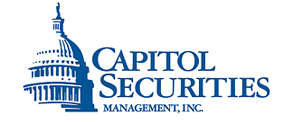By: Kent Engelke | Capitol Securities
Employers added jobs at an above average pace for a second month. The 235,000 increase followed a 238,000 rise in January that was more than previously estimated and was the best back to back rise since July.
Some are discounting the rise because of the unseasonably warm weather, but the data does coincide with a surge in economic optimism following Trump’s victory.
The labor participation rate (LPR), which I believe is a good proxy of the strength of the jobs market, also rose, rising to 63.0%, the highest participation rate since December 2013. The LPR was 62.6% in November.
This data all but ensures the Federal Reserve will increase rates next week.
Commenting further on the LPR, the LPR was around 66.1% in 2008. It was on a downward trend since reaching a 45-year nadir of 62.5% in November 2015 and has remained in this zone since then. A strong case can be made that the vast majority of the drop in the unemployment rate from 10% to 4.7% was the result of the plunging LPR as there are less workers in the workforce, thus a lower unemployment rate. It is estimated that if the LPR was around 2008 levels, the unemployment rate would be about 9%.
The prime age participation rate (people aged 25-54) rose to 81.7% up from 80.6% in September 2015, which matched the lowest since 1984.
Has the trend reversed itself? The answer to this question is pivotal regarding monetary policy and interest rates and perhaps equity performance.
A case can be made that wage gains may remain modest (as was the case in both January and February’s data) because of this huge pool of labor which will permit the FOMC to maintain more of an accommodative policy than the headline data may otherwise suggest.
As noted many times and as indicative by every business and consumer sentiment survey, optimism is surging because of the election. Is this change in sentiment — aka the unleashing of animal spirits that have been caged since 2008 — going to translate into increased activity and capital formation that permits greater growth than anticipated?
If annual growth accelerates to over 3% for the first time in 10 years, the Trump administration may be viewed in the same light as General Patton, the abrasive general who was instrumental in defeating Hitler.
To place this anemic growth into perspective, according to the Bureau of Economic Analysis, this is the first time since record keeping commenced in 1929 that the economy did not grow at 3% or higher for one year in a 10-year stretch.
This record shattered the previous record of four year from 1930-1934.
If growth does accelerate to over 3% for a myriad of reasons, there is great potential that Main Street will outperform Wall Street.
To remind all, the last time Main Street did outperform was in 2005, the last year annual growth was over 3%. The US expanded by 3.3% during 2005.
Because of the data, fed funds futures are now suggesting a 30% chance of four interest rate hikes in 2017. Wow! This is the first time in over ten years the market is perhaps suggesting more hikes than thought on January 1.
Markets closed nominally higher on the news.
What will happen this week? The Fed meeting concludes Wednesday; there is a host of inflation data, retail sales statistics, consumer confidence and housing information as well as a key vote in the Netherlands which may further impinge globalism.
Last night the foreign markets were up. London was up 0.25%, Paris was up 0.09% and Frankfurt was up 0.07%. China was up 0.76%, Japan was up 0.15% and Hang Sang was up 1.11%.
The Dow should open flat ahead of a busy week. The 10-year is up 1/32 to yield 2.58%.

















